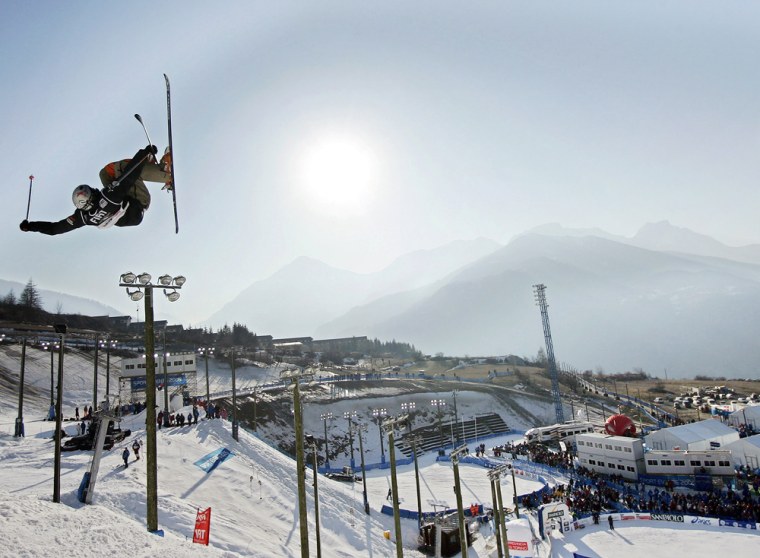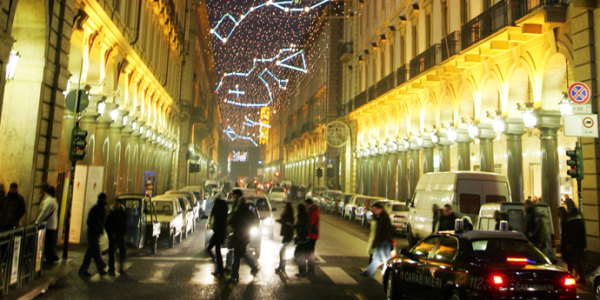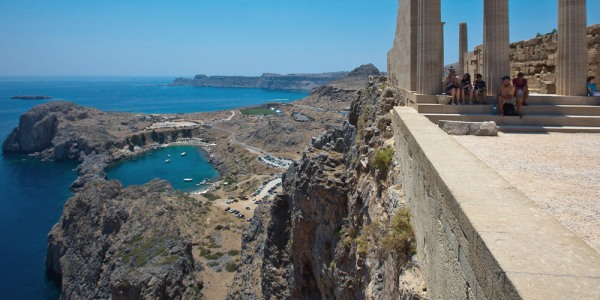When the Olympics come to town, they tend to drive away most recreational skiers, often for the entire season. But while most of the Italian resorts hosting the Winter Olympics will be off-limits to dilettantes during the February 10–26 run of the Games, not all of them are. You can still carve the slopes at Bardonecchia right above the half-pipes where snowboarders will be showing off their aerial skills. And besides, the mountains being used for the Olympics aren't the only ski resorts in Northwestern Italy. Anyone up for skiing Mont Blanc?
There's nothing like skiing the Alps. It's not just the 5,800-foot vertical drops backed by cut-glass peaks, or the wide-open expanses of virgin powder, or the way groomed trails and back-country skiing are equally mixed—and easily accessible. It's the whole Olde Worlde experience of it all, carving your way down a mountain from village to village, stopping for mulled wine and hearty mountain fare in centuries-old taverns, and—when you've run out of downhill—riding a series of trains, buses, cable cars, funiculars, and chair lifts back up to the top.
That's what skiing the Alps is all about. And this year, you can do it right alongside the world's greatest winter athletes.
SNOWBOARD WITH THE OLYMPIANS
First let's take care of that myth that you can't hit the slopes at the same time as the folks vying for medals. Yes, the host resorts of major downhill and Alpine events, including Sestriere and Cesana San Sicario, will be closed to non-Olympians from January 31 (the actual Olympic runs shut down starting January 8) through the end of the Games on February 26. But the boarders at Bardonecchia, one of the region's largest and most fashionable towns, won't be needing the whole mountain—just the new half-pipe and giant slalom course—so most of its 52 runs (totaling 87 miles) will remain open to us plebes.
Slideshow 10 photos
Italian dreams
What's more, the resorts where Olympic events are taking place aren't the only places to ski in the . There are five ski resorts and a combined 248 miles of runs threading these valleys west of Turin where the Alps wash up against the French border. Several other mountains tucked in between the Olympic venues have no restrictions whatsoever on their lifts or their runs. This includes Sauze d'Oulx, a wonderfully medieval town popular with Brits, and even the Montiluna area (great tree skiing) of Cesana's Claviere section—right across from Cesana's San Sicario slopes where all the downhill, biathlon, and luge/bobsleigh/skeleton action will be taking place.
The real issue is not whether you can use the slopes during the Games, but whether you can find a place to stay in these small towns being overrun by a big, five-ring circus. Luckily, though hotels are mostly gone, there are still plenty of alternative lodgings available throughout the area, as I detailed in an earlier article, . The practical upshot: you can find an apartment, B&B, farm stay, or rental room in a private home through the local tourism authority — which is also an excellent resource for researching your ski options.
Of course, you can always just bide your time and go after the Games are over. Come February 27, all ski areas in the Via Lattea will reopen to the public (save for the lower area of the Banchetta Giovanni Nasi course, which is hosting the Paralympic Games March 5–19). Given the lull that tends to follow most Olympics, you just might have the slopes all to yourself—and inexpensively, to boot. For example, special packages at Bardonecchia start at €180 to €250 ($212 to $294) per person, and that covers four nights' lodging, breakfast daily, and a four-day ski pass. For much more on skiing and staying in the Via Lattea resorts, .
If you just can't wait that long to break out the pom-pom hat and strap on your boards, might I suggest avoiding the Olympics region altogether and setting your sights a bit further north—and a lot higher up.
GO NORTH, YOUNG SKIER
North of Olympic-host Piemonte, wedged up between the French and Swiss borders, is the tiny Italian region of Valle d'Asota. It's little more than a wide valley of castle-topped hills, lushly farmed lowlands, and houses roofed with dragon-sale lose (massive stone tiles). The capital city, Aosta, still preserves much of its ancient Roman walls, gates, and theater, and the biggest yearly event is the October "Battle of the Cows" (a bit like bovine Greco-Roman wrestling). In short: this is rural Alpine Italy at its most picturesque.
More to our purposes, this east-west valley is hemmed in to the south by the 13,400-foot Gran Paradiso massif (now part of a national park), and to the north by a string of famous Alps strung along the Swiss border: Monte Rosa (15,302 feet), the Matterhorn (which the Italians call Monte Cervino; 14,777 feet), the Grand St. Bernard Pass (only 8,148 feet, but its resident S&R monks once bred a famously fluffy dog), and finally, marking the spot where Italy ends and France begins, the highest point in Europe: Monte Bianco (15,863 feet).
And you can ski them all.
Not only that but, unlike in Piemonte, there are still plenty of hotel rooms to be had all across the — and with everyone focusing their attention on the Olympic area, I'll bet the slopes up here will be a bit emptier than usual.
Best of all, the Valle d'Asota is just a 90-minute drive from Turin and two to three hours away from the Olympic Alpine resorts. You could easily come for a mid-February week to spend some days on the slopes yourself and other days attending Olympic events. Who knows? You might even pick up a few pointers to improve your form. For more on how to get tickets to the Olympics, .
SKIING THE BORDERS, BABY
There are ski lifts and back country opportunities galore around the Valle d'Aosta, but to get the most out of your Alpine ski vacation, head for one of the biggest concentrations of facilities.
The ski terrain around is actually made up of seven interlinked resorts spread across three parallel valleys, making skiing these 112 miles of runs a lot more fun and engaging that your typical US resort (yo-yoing up and down from lodge to peak and back again), and the perfect example of that old-school European village-to-village ski experience.
The modern resort set halfway up the Italian side of the Matterhorn/Monte Cervino is called , featuring 87 wildly popular (i.e.: overcrowded) miles of slopes. Still, this is the Matterhorn, and if you can add in the frankly prettier Zermatt ski area on the Swiss side—easy to do with a cable-car/chairlift combo—the total skiable territory jumps to 217 miles.
Slideshow 23 photos
A European tour
The vast, linked resort areas of and spread around the Little St. Bernard Pass on the Valle d'Asota's western edge, offering a combined 93 miles of runs and lots of southern sun (which means the best skiing here is in the morning).
Then there's the biggie, itself and the chichi resort town of at its feet. There's actually not that much in the way of formal, groomed skiing on the Italian side of Europe's highest peak—just 26 runs spread over 22 miles. But grab a and you can cruise the Valée Blanche—one of the world's longest skiable glaciers—in a day that takes you by cable car, ski, and train from Courmayeur on the Italy side to Chamonix in France (€55/$65 for the guide service, plus €39/$46 for the various forms of transportation).
A single day's ski pass at any one resort area in the region will set you back about €30 to €35 ($35 to $41)—though the longer you ski, the lower the per diem. There are also all sorts of multi-day passes combining neighboring ski areas, including some that jump the international borders—such as Breuil-Cervinia plus Zermatt (from €42/$50 a day), or both sides of Monte Bianco/Mont Blanc (from €99/$117 for three days)—as well as mega-passes covering every ski area in the entire Valle d'Asota (from €99/$117 for three days).
The height of the ski season is January through mid-March. In most places you can get discounts—along with far fewer crowds—both pre-season (before December 18) and during spring skiing (after April 3). Get all the nitty-gritty, plus trail maps, snow and weather reports, and other practical news at .
Bio: Reid Bramblett is a guidebook author and the creator of the travel planning site . He is currently working on sections of the new Pauline Frommer's Guide to Italy, including the Turin and Piemonte chapter.


